Why Most Operating Models Fail
A concise comparison of the Industrial and Agile Product Operating Models, explaining why traditional structures fail in dynamic markets and how …
Deliver valuable, usable products through iterative learning, customer feedback, and continuous improvement. Align strategy, discovery, and delivery to maximise outcomes and reduce risk.


Product Development is the systematic process of delivering valuable and usable products through iterative learning, customer feedback, and continuous improvement. It encompasses the alignment of strategy, discovery, and delivery to maximise outcomes while minimising risk. This concept is crucial as it enables teams to respond effectively to changing market demands and customer needs, fostering an environment where innovation can thrive.
By integrating practices from Agile, Lean, and DevOps, Product Development promotes a culture of collaboration and transparency, allowing cross-functional teams to work cohesively towards shared goals. It emphasises the importance of understanding customer feedback loops, which inform product iterations and enhancements, ensuring that the end product not only meets but exceeds user expectations.
The long-term, systemic nature of Product Development means that it is not merely about delivering a product but about creating a sustainable framework for ongoing value delivery. This approach encourages teams to embrace experimentation and learning, leading to improved efficiency and effectiveness in product delivery. By focusing on continuous improvement and adaptability, organisations can cultivate resilience and maintain a competitive edge in an ever-evolving landscape. The emphasis on value delivery ensures that every effort contributes meaningfully to the organisation’s strategic objectives, reinforcing the importance of a well-defined Product Development process in achieving long-term success.
A concise comparison of the Industrial and Agile Product Operating Models, explaining why traditional structures fail in dynamic markets and how …
Explains why dependencies are a sign of poor system design and outlines steps to eliminate them by aligning teams, clarifying ownership, and …
Value in software is only realised through delivery. Frequent releases validate assumptions, reduce risk, and enable rapid feedback, adaptation, and …
Building the Minimum Viable Product to test ideas and validate market assumptions quickly.
Mentoring program for product managers and leaders to master Agile, product management, UX, and evidence-based decision-making, with Scrum.org …
Explores why real leadership means designing systems that enable team autonomy, flow, and accountability, rather than relying on command-and-control …
Explores how effective capacity planning shifts focus from individual hours to system-level flow, using Lean and Agile principles to improve …
Mentoring program for developers and teams to master Agile, DevOps, Kanban, and evidence-based practices, fostering engineering excellence and …
Explains how the Definition of Done evolves in Scrum, aligning team practices with organisational standards to ensure consistent quality, compliance, …
Scrum teams must deliver working software to real users every Sprint; true progress is measured by delivery to production, not just by completing …
The Scrum Master is an accountability in Scrum, responsible for enabling the effectiveness of the Scrum Team and fostering continuous improvement …
Measuring individual cycle time in Kanban misleads teams, hides real bottlenecks, and harms flow. Focus on system-wide metrics like PCE, WIP, and …
Delivering working, valuable software at the end of each iteration, ensuring value is incrementally added to the product.
Explores how hypothesis-driven engineering helps teams maximise product value by testing ideas, measuring outcomes, and learning from failure to guide …
A specialized product operating model for organizations adopting agile methodologies. It integrates agile practices with product management principles …
Minimising waste while maximising learning in product creation.
Compares “flow of value” and “flow of work” in Kanban, explaining why only validated outcomes count as value and stressing the need for evidence, …
Explains how audience-based deployment and testing in production enable faster feedback, safer rollouts, and higher software quality by targeting real …
Explains the difference between subjective goals and the objective Definition of Done in Scrum, highlighting how clear, measurable criteria ensure …
Explains why promoting code through multiple branches slows delivery, increases risk, and suggests GitHub Flow or Release Flow as simpler, safer …
Explains why true Scrum requires real team agency, not just self-management in name, and how lacking agency leads to ineffective, ritualistic Agile …
Using experimentation and validated learning to drive product decisions.
Comprehensive guide to using OKRs for shared focus, measurable outcomes, and strategic learning, including roles, events, best practices, and common …
Applying Lean principles to rapidly test and validate business ideas with minimal risk.
Maximise product value with Agile Product Management. Align strategy, customer needs, and continuous delivery.
Explores Agile as a disciplined system of delivery, emphasizing engineering excellence, CI/CD, observability, and system design over mindset or …
Tracking estimation accuracy in software delivery leads to mistrust, fear, and distorted behaviours. Focus on customer value, flow, and outcomes, not …
Explains how Scrum teams can strategically allow unfinished work to flow across Sprint boundaries, enhancing throughput, responsiveness, and …
AI exposes that coding was never the main bottleneck in software delivery; real constraints are in system flow, team practices, and organisational …
Excessive handoffs in software development create delays, reduce quality, and harm team morale. Learn how eliminating handoffs boosts agility, flow, …
Ensuring continuous delivery of incremental improvements to users and stakeholders.
High work in progress (WIP) causes delays and unpredictability; improving estimates won’t help. Limiting WIP and focusing on flow is key to reliable …
The process of delivering usable working software products to customers, including planning, development, testing, and deployment.
Learn Kanban principles and hands-on Azure Boards setup to visualize workflow, set WIP limits, track flow metrics, and improve team throughput and …
Strategies for iterative and continuous value delivery to customers.
Time to Market is one of the four key value areas of Evidence‑Based Management that focuses on organizational capability. It is not a single measure …
Explore and compare Agile frameworks. Understand their principles, applications, and impact on organisational agility and value delivery.
Learn to integrate modern UX practices into Scrum, enhance team collaboration, and manage user-centric work, with certification included for …
The Product Owner is an accountability in Scrum, responsible for maximising product value through effective backlog management and stakeholder …
Struggling with inconsistent delivery? Discover why a shared definition of done is key to predictable, high-quality results your teams, and …
Using data, metrics, and feedback to drive continuous improvement in teams and processes.
Explores when to use a single Azure DevOps project versus multiple projects, detailing impacts on flow, visibility, governance, and team collaboration …
A cross-border product team overcame misalignment and role confusion through immersive mentorship, boosting collaboration, engineering engagement, and …
Getting Started with the Definition of Done (DoD). Every team should define what is required, what criteria must be met, for a product increment to be …
Stop confusing acceptance criteria with definition of done, learn the crucial difference to boost quality, speed, and trust in your agile delivery.
Transform your definition of done into a strategic advantage, deliver real value, reduce risk, and drive business impact with every sprint.
Optimising how often software is deployed to enhance feedback loops and value delivery.
Explains how the Scrum Master is accountable for enabling effective product delivery, fostering team success, and ensuring each sprint produces a …
Evidence-Based Management (EBM) is a strategy for improving an organisation’s ability to deliver value by making decisions based on evidence, not …
Continuous Delivery is the practice of frequently delivering small increments of valuable product directly to real users, enabling rapid feedback, …
Learn to apply Evidence-Based Management for agile leadership, focusing on empiricism, customer value, key metrics, and data-driven decision-making to …
Master Agile Planning to balance flexibility with predictability. Align teams, optimise delivery, and drive value continuously.
Manage Agile projects effectively with Azure Boards. Track work, optimise planning, and improve team collaboration.
Strategies and techniques for effective backlog management and refinement.
A practical framework guiding organisations to adopt AI by prioritising real problems, clarifying context, and enabling adaptive, evidence-based …
Testing product ideas with real users to ensure market fit and customer value.
Learn to scale Scrum with the Nexus Framework, tackle cross-team challenges, and prepare for SPS certification through hands-on workshops and …
Combined Scrum Master and Product Owner training covering Agile mindset, Scrum framework, value delivery, backlog management, and certification exam …
The Scrum Team is a defined accountability within Scrum, composed of a Scrum Master, Product Owner, and Developers working together toward a shared …
Gain practical skills in Agile product ownership, Scrum, backlog management, and value delivery. Includes PSPO I certification attempt and is ideal …
We partner with businesses across diverse industries, including finance, insurance, healthcare, pharmaceuticals, technology, engineering, transportation, hospitality, entertainment, legal, government, and military sectors.

Kongsberg Maritime

Hubtel Ghana

Slicedbread

Qualco

Schlumberger

Teleplan

Lean SA
NIT A/S

Slaughter and May

Deliotte

Capita Secure Information Solutions Ltd

New Signature

Trayport

Epic Games

Alignment Healthcare

Big Data for Humans

Akaditi

Higher Education Statistics Agency

Royal Air Force

Department of Work and Pensions (UK)

Washington Department of Transport

Nottingham County Council

Ghana Police Service

New Hampshire Supreme Court

SuperControl

Alignment Healthcare

Lean SA

Bistech

Graham & Brown

ProgramUtvikling